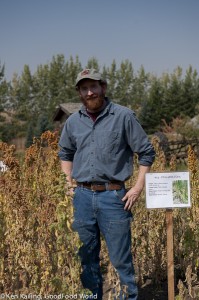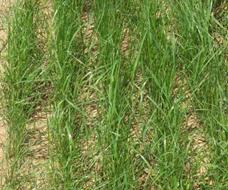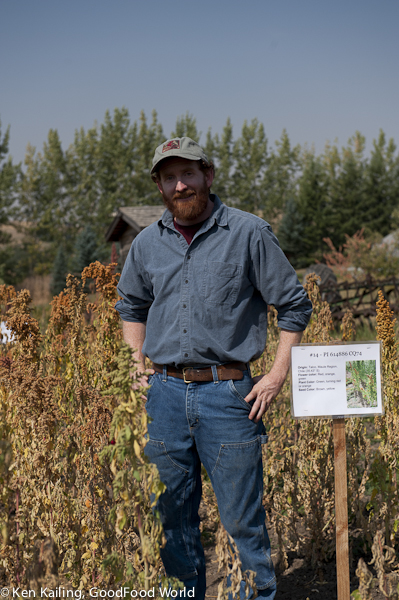Alternative grains like Quinoa and Teff are not widely grown in the Northwest. Both are “imports;” quinoa from South America and teff from Africa.

On our “drive about” we decided to go to the experts to learn as much as we could about these two unique grains. Catching Kevin Murphy for a quick look at his Washington State University test plots outside Pullman was just plain luck.
He emailed us at 10:15 and by 11:00 we were standing beside his truck ready to follow him out of town. Kevin has been all over the state harvesting a wide variety of grains off test plots scattered hither and yon.
Dr. Kevin Murphy is a specialist in plant breeding and genetics, and his quinoa trials began with 100 varieties of seed. In its second year, the trial plot is now growing 30 of the best representatives from last year. After this year’s harvest – done by machine, but in painstakingly small steps through the field – the top 8 or 10 will make the cut.
Murphy is looking for those varieties that best use the soil nutrients, produce the most and highest quality seed, grow best in dry conditions, and have the highest level of food nutrients for human consumption. That’s a tall order!
Farmers and seed growers from around the world are watching Kevin’s progress. Most of the quinoa on the market today is imported from South America, where it has been a traditional food for thousands of years. Americans love quinoa and we are buying up the food that is no longer available or affordable for those who have traditionally eaten it.

In a second instance of serendipity, just around the corner – also at WSU Pullman – we found the curator for the entire country’s collection of teff seed, Vicki Bradley. She is responsible for managing the cool-season grass collection which consists of more than 18,300 accessions and the Carthamus collection that includes 2,430 accessions of safflower and its wild relatives. Vicki is especially interested in characterizing the teff grass collection. Teff is a part of the cool-season grass collection yet it can be grown in the Palouse (southwestern Washington).
When she poured a small amount of seed into her hand, it became instantly obvious how difficult this crop must be to harvest, clean, and mill. The seeds are even finer than poppy seeds. We covered our faces to examine them so that we wouldn’t blow them out of Vicki’s hand.
Teff is an important cereal grain in Ethiopia and is becoming more popular in the US for those who require a gluten-free diet.
We are on the final leg of our “grain tour” of Washington and Montana where we met farmers and millers growing and processing heritage grains and grain alternatives. Kevin and Vicki are just two of the many links in the chain that makes it possible for this region to produce so many unusual – and delicious – cereal grains.
Today – on the road home!
(Photo: Penn State, Department of Agriculture, Extension Service)

